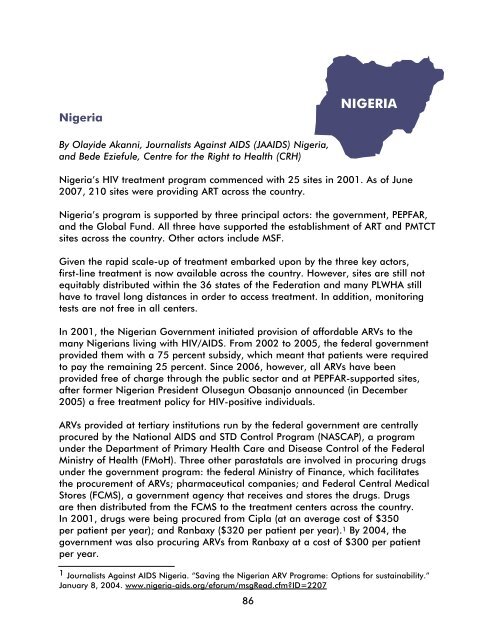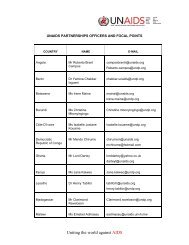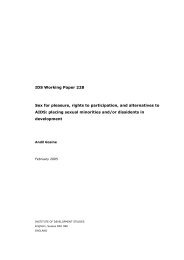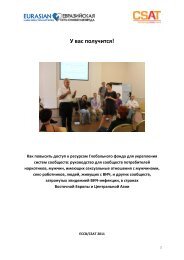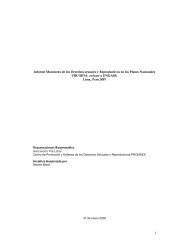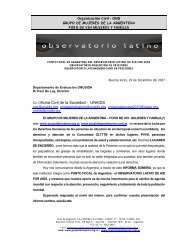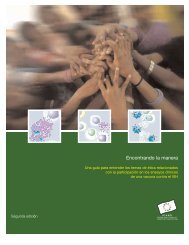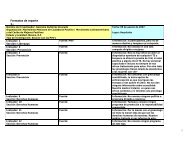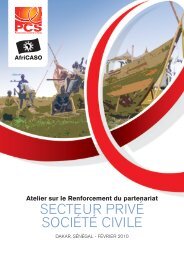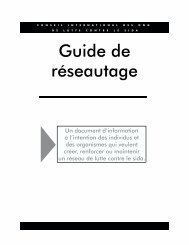Missing the Target #5: Improving AIDS Drug Access ... - CD8 T cells
Missing the Target #5: Improving AIDS Drug Access ... - CD8 T cells
Missing the Target #5: Improving AIDS Drug Access ... - CD8 T cells
You also want an ePaper? Increase the reach of your titles
YUMPU automatically turns print PDFs into web optimized ePapers that Google loves.
NigeriaBy Olayide Akanni, Journalists Against <strong>AIDS</strong> (JA<strong>AIDS</strong>) Nigeria,and Bede Eziefule, Centre for <strong>the</strong> Right to Health (CRH)Nigeria’s HIV treatment program commenced with 25 sites in 2001. As of June2007, 210 sites were providing ART across <strong>the</strong> country.Nigeria’s program is supported by three principal actors: <strong>the</strong> government, PEPFAR,and <strong>the</strong> Global Fund. All three have supported <strong>the</strong> establishment of ART and PMTCTsites across <strong>the</strong> country. O<strong>the</strong>r actors include MSF.Given <strong>the</strong> rapid scale-up of treatment embarked upon by <strong>the</strong> three key actors,first-line treatment is now available across <strong>the</strong> country. However, sites are still notequitably distributed within <strong>the</strong> 36 states of <strong>the</strong> Federation and many PLWHA stillhave to travel long distances in order to access treatment. In addition, monitoringtests are not free in all centers.In 2001, <strong>the</strong> Nigerian Government initiated provision of affordable ARVs to <strong>the</strong>many Nigerians living with HIV/<strong>AIDS</strong>. From 2002 to 2005, <strong>the</strong> federal governmentprovided <strong>the</strong>m with a 75 percent subsidy, which meant that patients were requiredto pay <strong>the</strong> remaining 25 percent. Since 2006, however, all ARVs have beenprovided free of charge through <strong>the</strong> public sector and at PEPFAR-supported sites,after former Nigerian President Olusegun Obasanjo announced (in December2005) a free treatment policy for HIV-positive individuals.ARVs provided at tertiary institutions run by <strong>the</strong> federal government are centrallyprocured by <strong>the</strong> National <strong>AIDS</strong> and STD Control Program (NASCAP), a programunder <strong>the</strong> Department of Primary Health Care and Disease Control of <strong>the</strong> FederalMinistry of Health (FMoH). Three o<strong>the</strong>r parastatals are involved in procuring drugsunder <strong>the</strong> government program: <strong>the</strong> federal Ministry of Finance, which facilitates<strong>the</strong> procurement of ARVs; pharmaceutical companies; and Federal Central MedicalStores (FCMS), a government agency that receives and stores <strong>the</strong> drugs. <strong>Drug</strong>sare <strong>the</strong>n distributed from <strong>the</strong> FCMS to <strong>the</strong> treatment centers across <strong>the</strong> country.In 2001, drugs were being procured from Cipla (at an average cost of $350per patient per year); and Ranbaxy ($320 per patient per year). 1 By 2004, <strong>the</strong>government was also procuring ARVs from Ranbaxy at a cost of $300 per patientper year.1 Journalists Against <strong>AIDS</strong> Nigeria. “Saving <strong>the</strong> Nigerian ARV Programe: Options for sustainability.”January 8, 2004. www.nigeria-aids.org/eforum/msgRead.cfm?ID=220786


